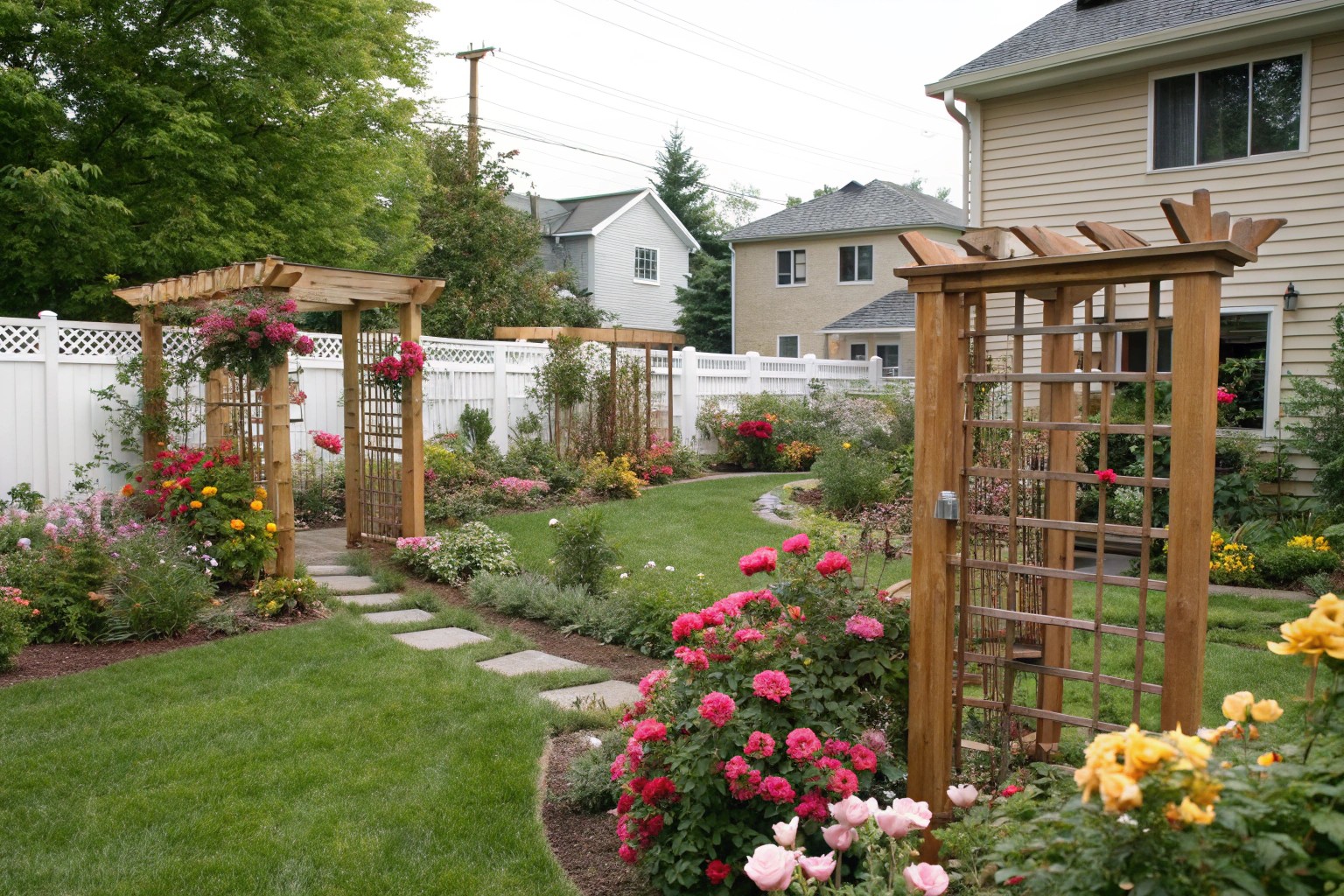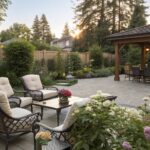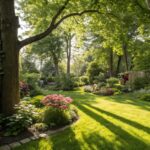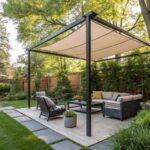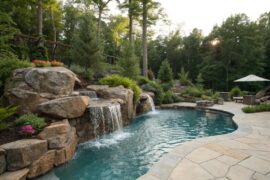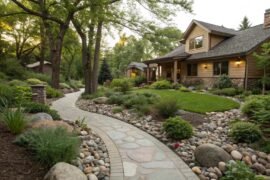In gardens and homes across America, trellises create living architecture that transforms ordinary spaces into extraordinary ones. These versatile structures not only support climbing plants but also serve as artistic elements that enhance any environment. The right trellis can turn a blank wall into a vertical garden, define outdoor spaces, or bring nature indoors in surprising ways.
The Evolution of Trellis Design
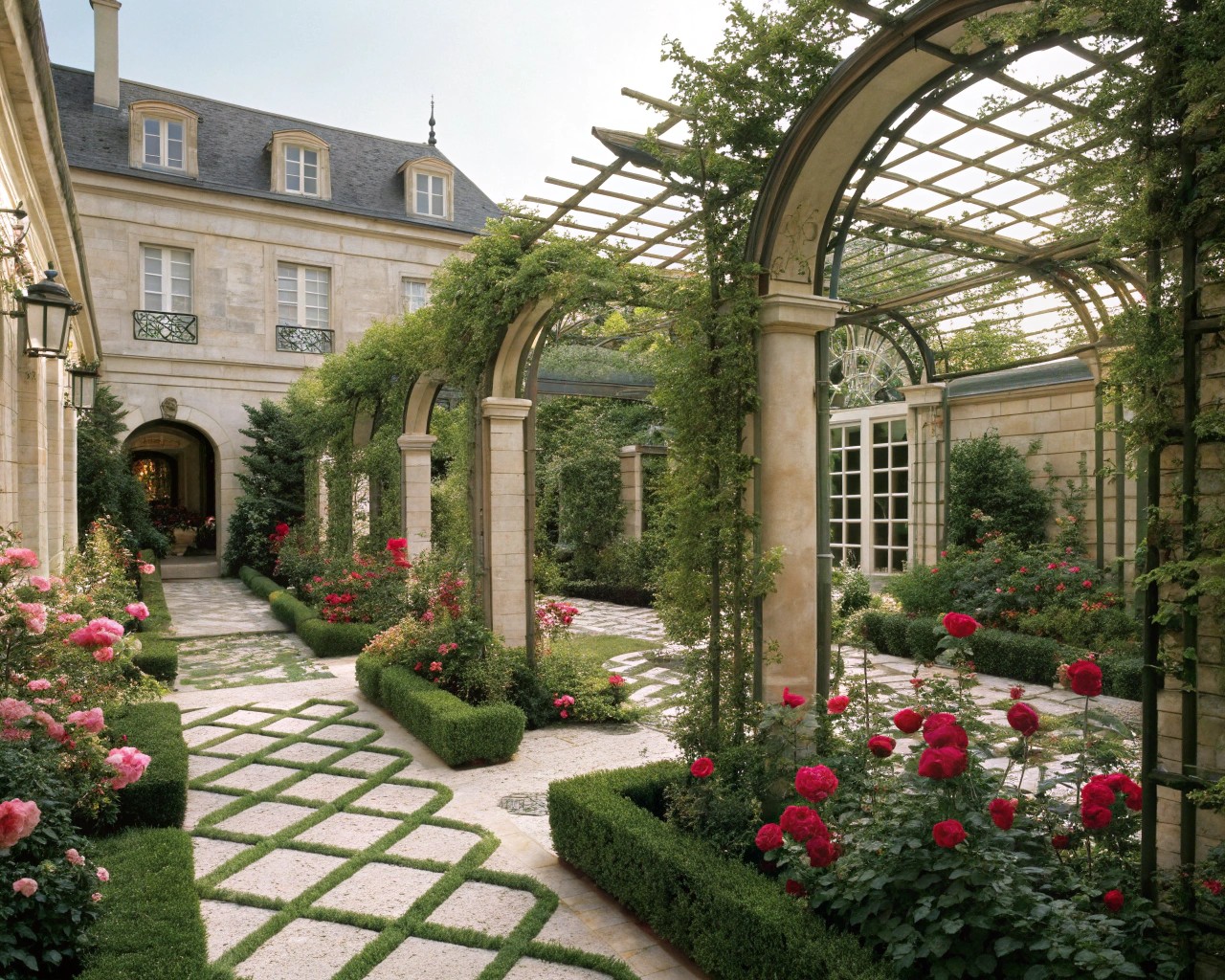
Trellises have graced gardens for centuries, evolving from simple supports to sophisticated design elements. Originally invented by countryside gardeners who needed to support growing vines, trellises gained prominence when King Louis XIV commissioned elaborate structures for the gardens at Versailles. By 1905, designer Elsie de Wolfe revolutionized interior design by introducing trellis work indoors with her iconic “Trellis Room” at The Colony Club in New York City.
Today, we see trellises used in countless creative ways, from traditional garden applications to innovative interior design solutions that blur the line between architecture and nature.
Selecting the Perfect Trellis Material
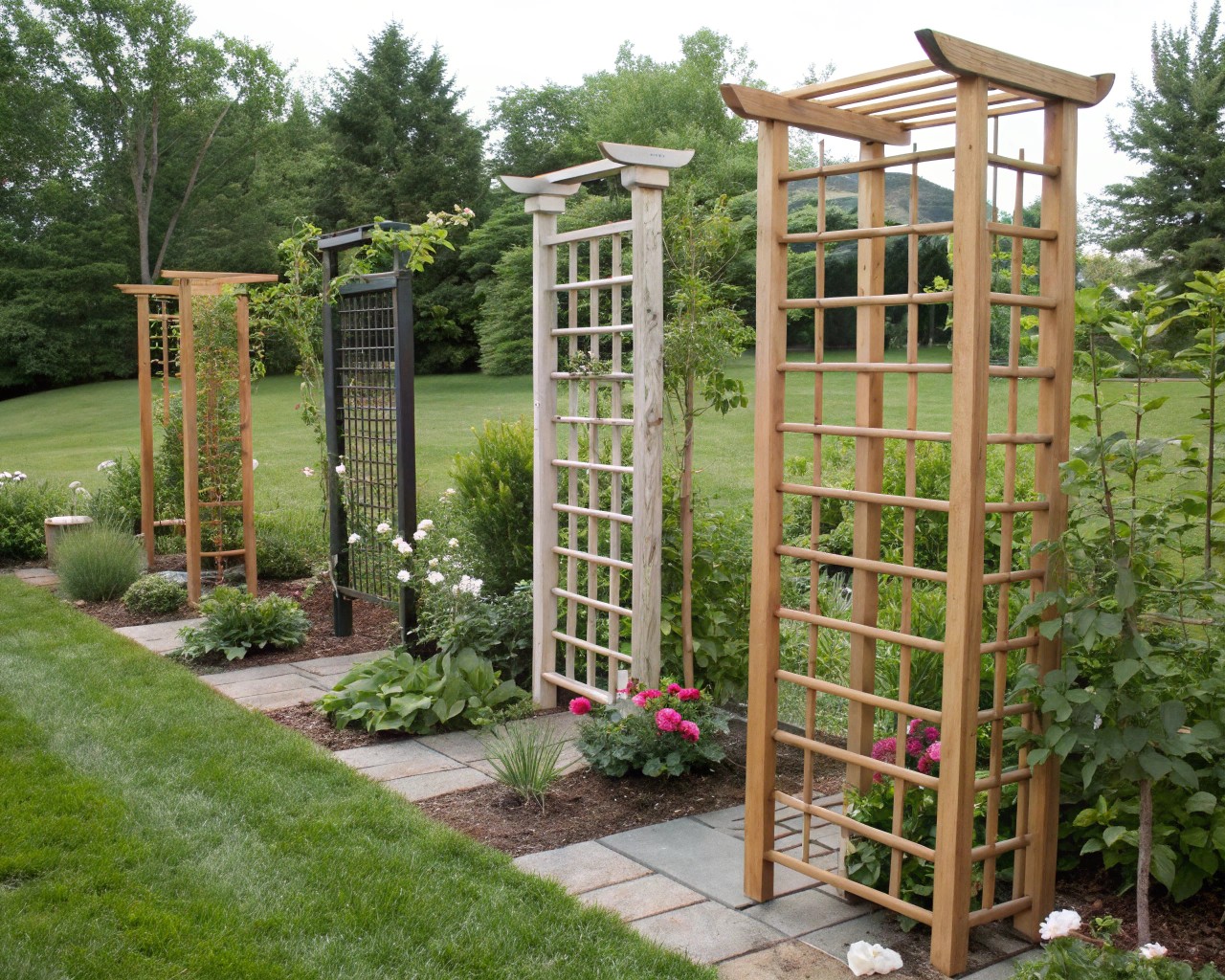
The material you select impacts not only aesthetics but also durability and plant support capabilities. In my experience, material selection often determines a trellis’s long-term success.
Table: Trellis Material Comparison Guide
| Material | Advantages | Disadvantages | Best Applications | Maintenance Level |
|---|---|---|---|---|
| Wood | Natural aesthetic, customizable | Requires regular maintenance, susceptible to rot | Traditional gardens, rustic settings | High – requires staining/sealing annually |
| Metal | Durable, strong support for heavy climbers | Can heat up in sun, potential for rust | Contemporary gardens, heavy vines | Medium – check for rust occasionally |
| Plastic/PVC | Lightweight, affordable, weather-resistant | Less aesthetic appeal | Temporary solutions, budget projects | Low – occasional cleaning |
| Bamboo | Sustainable, natural look, flexible | Less durable than other options | Asian-inspired gardens, lightweight climbers | Medium – replacement every few years |
| Wire | Minimalist, nearly invisible support | Limited decorative value on its own | Supporting plants against walls | Low – occasional tension adjustment |
As horticultural experts often point out, each material presents trade-offs. Wood provides a classic garden look but demands upkeep, while durable metal offers robust support but may rust. Plastic options are practical and weather-resistant, though perhaps less visually appealing than natural materials.
Understanding How Plants Climb
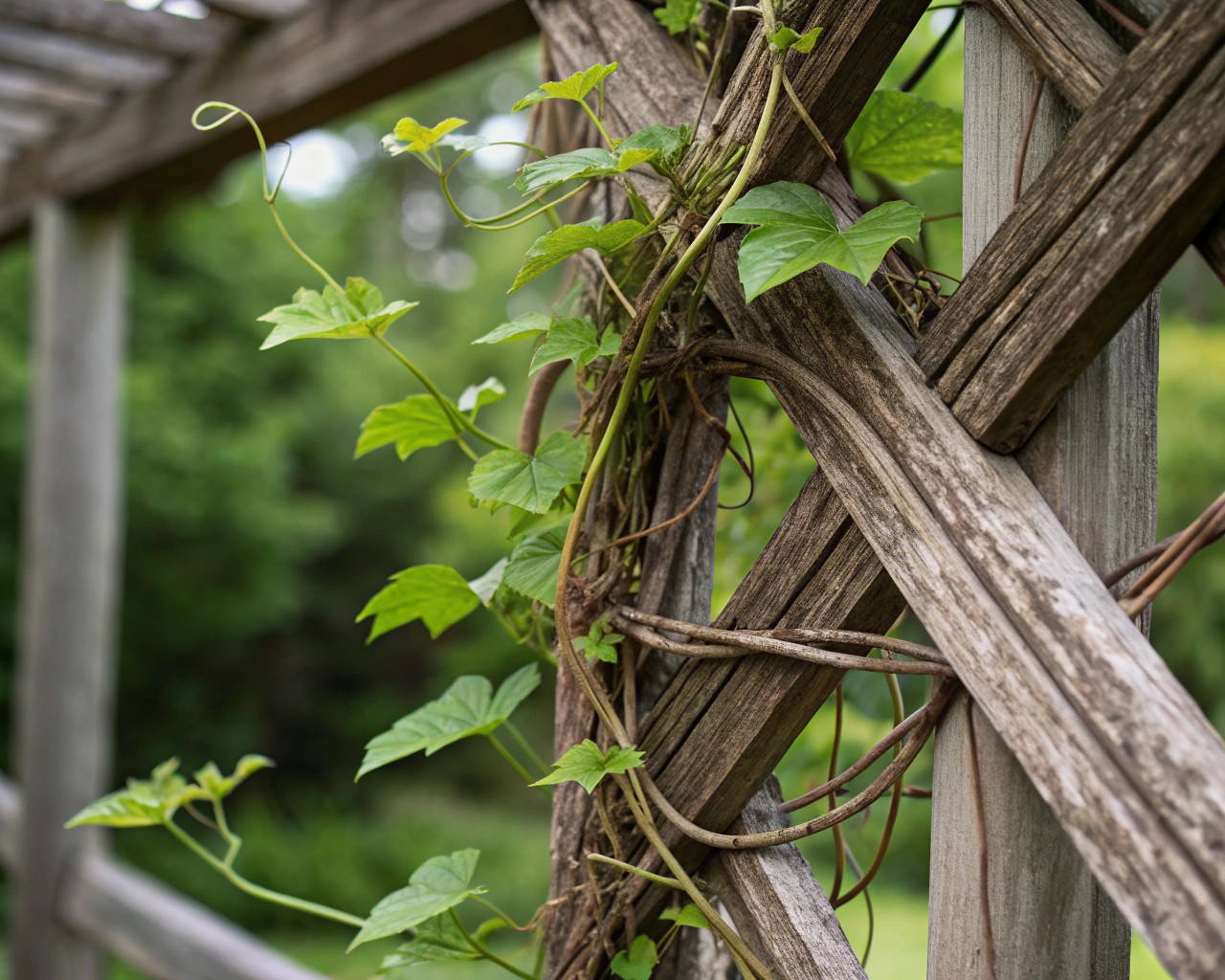
One client’s failed jasmine display taught me a valuable lesson: not all climbing plants scale supports the same way. Understanding how your plants climb ensures you provide the right support structure.
Plants typically climb in four ways:
- Twining stems (morning glories, clematis) wrap their stems around supports
- Tendrils (peas, grapes) reach out and coil around anything they touch
- Clinging roots (ivy, climbing hydrangea) attach directly to surfaces
- Scrambling plants (climbing roses) don’t technically climb but can be trained and tied to supports
The diameter of your trellis supports is particularly important for twining plants. Research shows that when support diameter increases beyond a certain point, twining plants cannot maintain tension and lose their grip. For these plants, trellises with thinner components work best.
Size and Scale Considerations
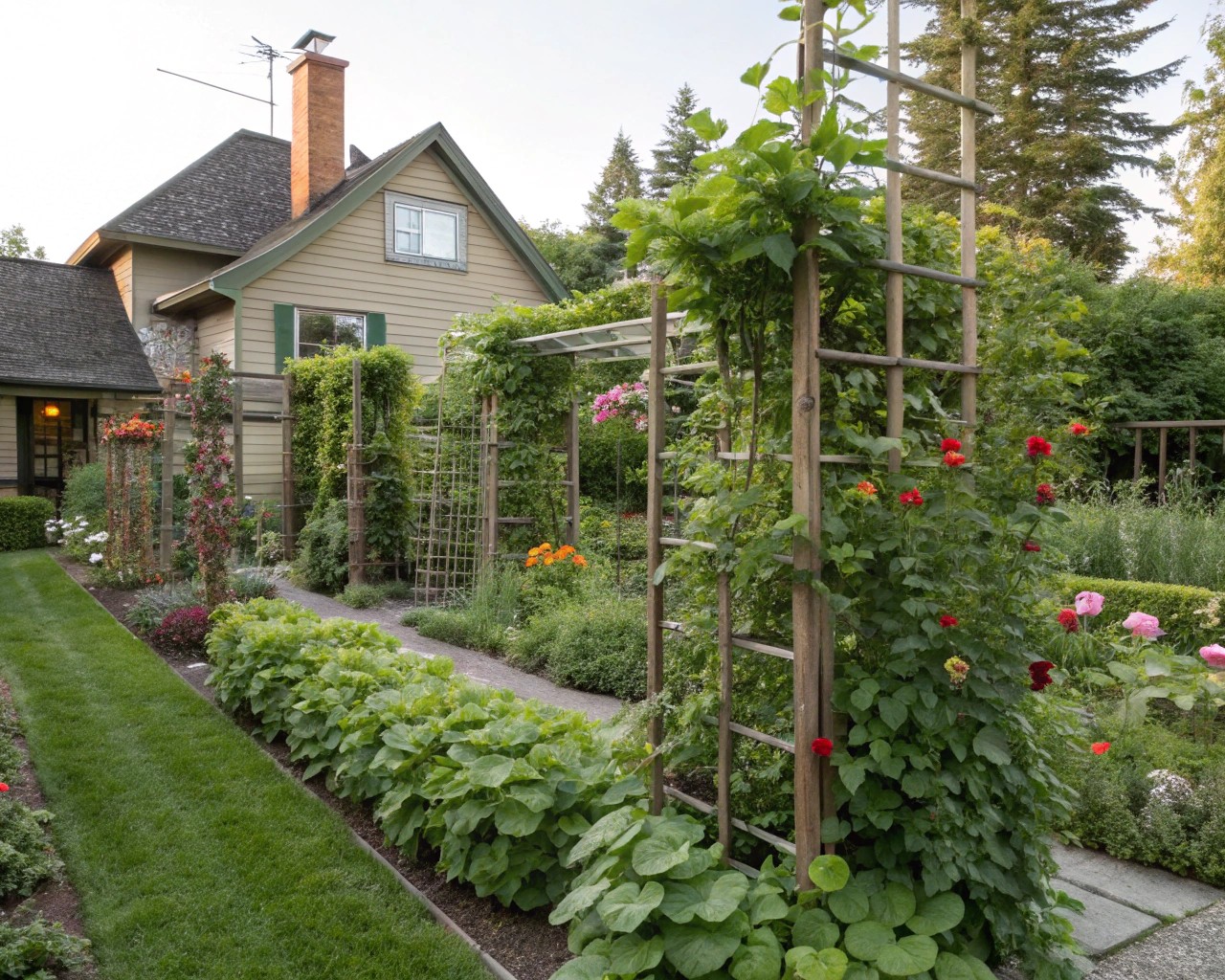
“My trellis looked perfect when I installed it, but by mid-summer, my cucumber vines had overwhelmed it completely,” a client once told me. This common scenario highlights why anticipating mature plant size is crucial.
When selecting a trellis, consider:
- The mature height and spread of your climbing plant
- The weight of the plant when in full growth and bearing fruit/flowers
- The plant’s growth rate (fast growers need sturdier supports)
- Whether the plant is perennial (requiring permanent support) or annual
Gardening experts agree that selecting a trellis appropriate for the plant’s eventual size is vital. Choosing one that’s too small can impede growth and potentially lead to damage, while an overly large trellis might dwarf smaller plants or disrupt the garden’s visual harmony.
Creative Trellis Applications for Every Space
Garden Transformations
In a recent project for a suburban family, we transformed a plain backyard fence into a stunning vertical garden using a series of wooden trellises. We selected several climbing plants with different blooming seasons, including clematis for spring color, climbing roses for summer fragrance, and ornamental grapes for fall foliage. What was once a boring boundary became the garden’s focal point, providing year-round interest.
Indoor Trellis Innovations
Bringing trellis designs indoors creates striking biophilic connections. One of our most successful projects involved installing a bright yellow trellis in a sunroom, creating an energetic backdrop for potted philodendrons and pothos. The repetition of geometric patterns added rhythm and movement to the room, making it feel more dynamic and inviting.
Functional Trellis Solutions
Smart trellis designs solve problems while enhancing aesthetics. Consider these applications:
- Privacy screens between neighboring properties
- Disguising elements like utility equipment or unsightly views
- Defining spaces in open-plan gardens
- Providing shade for seating areas
- Maximizing growing space in small gardens or balconies
7 Innovative Trellis Ideas for Modern Gardens
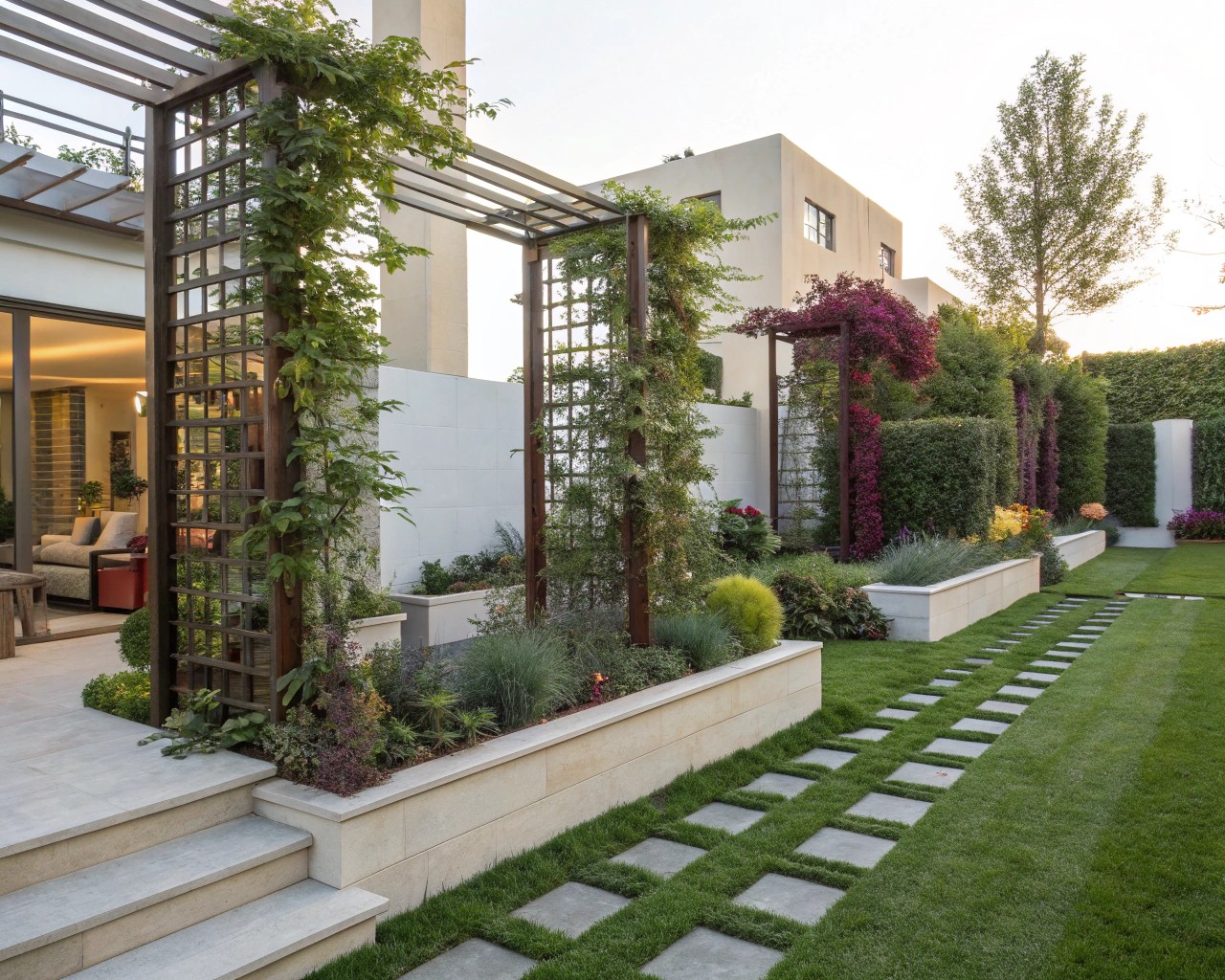
-
Trellised Planter Box – A combination that adds aesthetic appeal while supporting climbing plants that can act as a privacy screen
-
Trellis Tunnel – Create a magical walkway with arched trellises covered in fragrant star jasmine or climbing roses
-
Container Garden Trellis – Perfect for small spaces, balconies, or patios where ground planting isn’t possible
-
Living Wall Trellis – Using multiple coordinated trellises to create a stunning vertical garden feature
-
Wooden Slat Trellis – Modern and architectural, these create beautiful shadows and light patterns
-
Trellis Statement Wall – A bold approach using trellises to create a living architectural feature
-
Coordinating Trellises with Planter Boxes – Creates a cohesive design that adds height, dimension, and continuity to your garden
Case Study: The Urban Rooftop Oasis
A young professional couple living in a downtown apartment approached us with a challenge: transform their stark, exposed rooftop into a private garden retreat. Working with limited weight capacity and extreme weather exposure, we designed a system of lightweight aluminum trellises anchored in fiberglass planters.
We selected climbing plants that could withstand wind and intermittent care, including morning glories for summer color, ornamental grapes for fall foliage, and evergreen jasmine for year-round structure. The trellises were arranged to create “rooms” within the space and positioned to block unwanted views while framing city vistas worth preserving.
Two years later, the rooftop has become their favorite “room” in the apartment, with the living walls of greenery providing privacy, beauty, and a surprising habitat for urban birds and butterflies.
Installation and Maintenance Essentials
DIY Installation Tips
For those installing their own trellises, consider these essential points:
- Secure anchoring – Ensure your trellis can support the weight of mature plants
- Proper spacing – Keep trellises 2-3 inches from walls for air circulation
- Climate considerations – Select materials appropriate for your weather conditions
- Plant access – Ensure you can reach plants for maintenance and harvesting
- Growth room – Allow space for plants to fill in without overcrowding
Seasonal Maintenance Schedule
Table: Seasonal Trellis Care Guide
| Season | Plant Maintenance | Structure Maintenance | Special Considerations |
|---|---|---|---|
| Spring | Prune dead growth, train new shoots | Check for winter damage | Install new trellises before active growth |
| Summer | Regular training of new growth | Clean algae growth in shady areas | Monitor for pest issues in dense growth |
| Fall | Light pruning, harvest fruits | Clean and prepare for winter | Consider removing annual vines |
| Winter | Major pruning of dormant perennials | Repair damaged parts | Add winter interest with structural elements |
Plants That Shine on Trellises
Several climbing plants have proven themselves exceptional performers on trellises in various settings:
- Bleeding Heart (Purple and Red or White and Red) – A butterfly and hummingbird magnet with uniquely shaped flowers
- Mandevilla – With glossy leaves and striking flowers that benefit from regular deadheading
- Cape Honeysuckle – Features cheerful orange tubular flowers that attract pollinators
- Passion Vine – Produces incredibly exotic flowers in purple or red
- Sky Vine – Perfect for those who appreciate blue flowers
Using trellises for vegetables offers numerous advantages acknowledged by gardening resources. It promotes better air circulation, keeps leaves away from potential soil diseases, increases sun exposure for foliage, simplifies harvesting, and can even improve pollination rates.
Quick DIY Trellis Weekend Projects
For those ready to create their own trellis designs, several approachable projects work well:
- Bamboo Teepee – Perfect for sweet potatoes and climbing beans
- Wooden Frame with Hortenova Netting – Creates a sturdy, natural-looking support
- Arch Trellis from Bent Electrical Conduit – Forms a charming garden tunnel for heavier plants like pumpkins
- Saplings and Twine Grid – A rustic, biodegradable option for annual climbers

